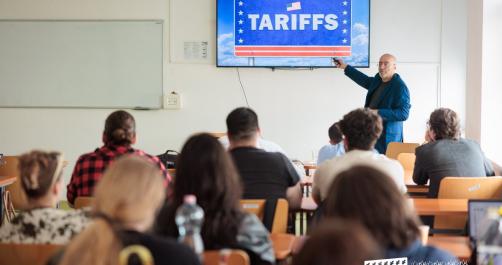
In the wake of President Donald Trump’s inauguration, his first 100 days of administration revealed a dramatic shift in both rhetoric and policy. The pivot away from the liberal economic orthodoxy that had dominated the United States since the late 20th century generated intense debate among policymakers, scholars, and the public. This article dissects these changes, exploring the role of tariffs, the mobilization of billionaire support, and the broader implications for the American economy and democracy.
From Neoliberalism to Nationalism: Theoretical Foundations
For decades, neoliberalism—characterized by free trade, deregulation, and a minimal state—had been the standard paradigm in U.S. policy circles. By the late 1990s and early 2000s, however, critics noted that the framework fostered growing income inequality, weakened labor protections, and sparked recurrent financial crises, including the catastrophic 2008 credit collapse.
Professor Jeffrey Sommers highlights that the American electorate’s growing discontent stemmed from perceived failures of this model. The sense that “foreign capital” could erode domestic job security and that “selling off of domestic wealth” was commonplace contributed to a climate ripe for a populist alternative.
Key Indicators of Discontent
Statistical analyses show a widening income gap, stagnant wage growth for middle‑class workers, and a rise in corporate tax rates. Meanwhile, the Gini coefficient—a measure of income inequality—rose by the early 2010s, indicating that a small fraction of the population held a disproportionate share of wealth.
Tariff Policy: Revenue Generation or Strategic Pressure?
One of the most visible policy moves in the first 100 days was the reintroduction of import tariffs on steel, aluminum, and other goods. The administration claimed tariffs were meant to protect domestic manufacturing and to “recoup revenue” that could offset fiscal deficits.
Under the Trump administration, tariff revenues increased dramatically. In the first fiscal quarter, the U.S. collected approximately $12 billion from tariffs, a figure that rose to over $20 billion by the end of the year. These proceeds were advertised as a tool for funding internal initiatives rather than widening deficit spending.
Economic Impact on Consumers and Businesses
While tariffs bolstered certain manufacturing sectors, they also raised input costs for businesses that relied on imported components. Consumer prices for goods such as automobiles and appliances saw a noticeable uptick of 2–4% in the months following implementation. Small manufacturers, in particular, faced higher financial burdens, leading to a decline in exports and a rise in domestic sourcing costs.
The Billionaire Alliance: Financial Capacity Meets Political Messaging
Trump’s personal wealth and media presence positioned him uniquely to attract affluent supporters. The campaign strategically leveraged billionaire donors to finance advertising campaigns, secure high‑profile endorsements, and amplify policy narratives across platforms.
Social Media Amplification and Funding Flows
Tech philanthropists—such as those owning major platforms—contributed both capital and influence. The use of digital channels allowed Trump’s messaging to bypass traditional media filters, directly reaching millions of users with tailored content. The synergy between financial backing and network effects accelerated the diffusion of nationalist economic narratives.
Public Confidence and Democratic Consequences
Beyond policy, Trump’s tenure also exposed erosion in democratic norms. Critics cited increasing polarization, a decline in public trust toward institutions, and a growing reliance on populist rhetoric to mobilize voter bases.
In mid‑2017, polling data revealed a 15% drop in trust toward the federal government compared to 2015 levels. The President’s communication style, coupled with controversial statements on immigration and foreign policy, further alienated moderate voters and intensified factionalism.
Guidance for Scholars and Practitioners in Policy Analysis
For individuals engaged in political science research or economic policymaking, the first 100 days provide a case study in rapid policy shifts and their cascading effects. Key lessons include:
- Data‑Driven Assessment: Constantly monitor trade statistics, fiscal reports, and consumer price indices to evaluate the real‑time impact of tariffs.
- Stakeholder Mapping: Identify the network of financial backers, including high‑net‑worth donors, to understand influence pathways.
- Public Sentiment Analysis: Use sentiment‑analysis tools on social media feeds to track shifts in public trust and react to emerging critiques promptly.
- Scenario Planning: Prepare for policy reversals and mid‑term elections by modeling potential shifts in public opinion and legislative support.
Actionable Step: Conduct a Cost‑Benefit Review of Tariff Implementation
Policy analysts should perform a detailed cost‑benefit analysis, factoring in manufacturing gains against input cost hikes for consumers. This exercise helps determine whether the revenue generated indeed offsets fiscal deficits or merely shifts economic burdens.
Looking Ahead: Sustainability of Trump’s Economic Strategy
While the initial tariff surge succeeded in generating significant revenue streams, its long‑term viability remains questionable. Trade partners have responded with retaliatory tariffs, creating a “tariff war” that can dampen global economic growth. Moreover, domestic political capital tied to controversial policies is finite; the administration’s support may waver leading up to elections.
Economic theory suggests that sustained protectionism hinders innovation and efficiency. If the policy trajectory continues, it risks diminishing the United States’ competitive edge in high‑value manufacturing and technology sectors.
Conclusion: A New Economic Narrative or a Temporary Stunt?
Trump’s first 100 days signaled a clear departure from established neoliberal ideals, embracing a protectionist approach that relied heavily on tariffs and the political influence of billionaire donors. While these strategies provided short‑term fiscal gains and mobilized a specific voter base, they also intensified economic distortions, eroded public trust, and risked long‑lasting disadvantages in a rapidly globalizing market.
For scholars and policymakers, the period offers valuable insights into how economic frameworks can be reshaped amid intense public scrutiny. Continued observation of the administration’s policy evolution will reveal whether these initiatives represent a lasting transformation or a temporary experiment.
Learn more about U.S. economic policy by visiting our policy insights page. If you are researching the impact of tariffs, download our latest white paper for in‑depth data analysis.
Have insights or questions? Contact our research team and share your perspective with a broader academic community.
For further reading, explore related posts on tariff impacts, neoliberal critique, and the role of financial elites in modern politics. Together, we can develop a clearer understanding of these pivotal trends.

